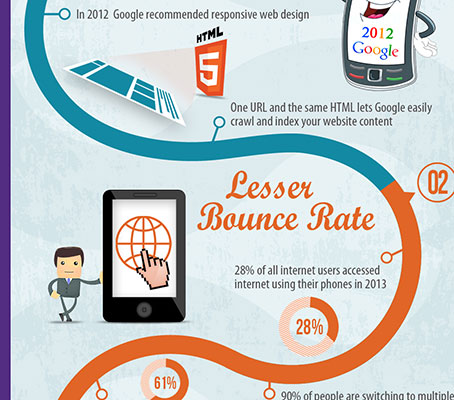The Advancement Of Web Site Style: From Past To Present
The Advancement Of Web Site Style: From Past To Present
Blog Article
Content Create By-Kinney Hejlesen
In the past, web sites were simple and concentrated on details. Navigation was straight, and layout was for desktops. Now, individual experience is key. Data overviews layouts for easy navigation. Receptive designs suit different tools. Today, dark mode decreases pressure, and minimalist food selections improve navigating. Interactive features engage customers, and vibrant visuals stand out. visit this page enhances engagement. See how design has actually advanced to boost your online journey.
Early Days of Website Design
In the early days of website design, simplicity reigned supreme. Internet sites were basic, with limited shades, typefaces, and layouts. The focus got on providing information rather than fancy visuals. Users accessed the web via slow dial-up links, so speed and performance were vital.
Navigating menus were straightforward, commonly located on top or side of the web page. Sites were developed for desktop computers, as mobile surfing had not been yet prevalent. Material was king, and developers focused on easy readability over intricate style elements.
HTML was the primary coding language used, and developers had to function within its constraints. Animations and interactive functions were minimal compared to today's requirements. Internet sites were fixed, with little vibrant web content or customized individual experiences.
Rise of User-Focused Design
With the evolution of website style, a shift in the direction of user-focused layout principles has actually become progressively prominent. Today, producing web sites that prioritize customer experience is vital for involving visitors and accomplishing organization objectives. User-focused style involves comprehending the needs, preferences, and habits of your target market to customize the web site's design, material, and features appropriately.
Developers now carry out thorough research study, such as customer surveys and use screening, to gather understandings and feedback straight from users. This data-driven strategy helps in creating instinctive navigation, clear calls-to-action, and visually appealing interfaces that reverberate with visitors. By putting the user at the center of the layout process, sites can provide a more tailored and pleasurable experience.
Get More Information has actually additionally emerged as a key aspect of user-focused layout, guaranteeing that websites are maximized for different gadgets and display dimensions. This adaptability enhances availability and use, satisfying the varied methods individuals connect with sites today. In essence, the rise of user-focused layout indicates a change in the direction of producing digital experiences that focus on the needs and expectations of completion user.
Modern Trends in Web Design
Discover the current trends shaping website design today. One noticeable pattern is dark setting design, providing a smooth and contemporary appearance while lowering eye strain in low-light environments. One more essential trend is minimalist navigating, simplifying menus and improving user experience by concentrating on essential elements. Incorporating micro-interactions, such as animated switches or scrolling impacts, can develop an extra appealing and interactive site. Responsive design remains critical, making certain smooth customer experiences throughout different devices. In addition, utilizing vibrant typography and asymmetrical layouts can add visual passion and draw attention to certain web content.
Integrating AI technology, like chatbots for customer assistance or customized recommendations, enhances customer interaction and streamlines procedures. Ease of access has also become a substantial fad, with designers prioritizing inclusive design techniques to cater to diverse individual needs. Accepting sustainability by optimizing website efficiency for speed and effectiveness is one more arising pattern in web design. Working together with user feedback and data analytics to repeat and boost design continually is essential for staying appropriate in the ever-evolving digital landscape. By accepting these contemporary patterns, you can develop an aesthetically enticing, easy to use site that reverberates with your target market.
Conclusion
As you reflect on the development of website design from the early days to now, you can see exactly how user-focused style has actually come to be the driving pressure behind modern-day fads.
Accept the trip of change and adaptation in web design, constantly keeping the individual experience at the leading edge.
Tippingpointdigital
Keep present with the latest fads and modern technologies, and never ever quit evolving your approach to create visually spectacular and user-friendly sites.
Develop, adjust, and create - the future of website design remains in your hands.
